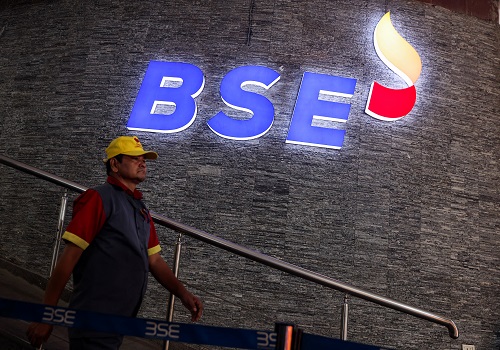Gold Outlook – June 2022 by Chirag Mehta & Ghazal Jain, Quantum AMC

Follow us Now on Telegram ! Get daily 10 - 12 important updates on Business, Finance and Investment. Join our Telegram Channel
Below is the Gold Outlook - June 2022 by Chirag Mehta, CIO & Ghazal Jain, Fund Manager- alternative Investment, Quantum AMC.
International gold prices closed at $1,837 in May,3%lower compared to Aprilas the geopolitical premium from the Russia-Ukraine war continued to wane and the Federal Reserve’s monetary tightening gatheredpace. Domestic prices were down 2%, closing the month at Rs 50,847 levels.
The U.S Central bank - Federal Reservehiked the benchmark interest rate by 50 bps in May to 0.75% to controlrising inflation, which grew by 8.3% y/y in April. Although the inflation number is marginally lower compared to the 8.5% in March, it is still historically high and way above the Fed’s 2% average inflation target. To that effect, the market has priced in two more 50 bps hikes in the subsequent meetings,which is reflected in the weakness in gold prices.The Fed Fund Futures rate suggests a rate hike of more than 200 bps by December 2022 in the next five meetings, which if materialized, will be a headwind for gold. Gold will also have to navigate the trimming of the Federal Reserves’ balance sheet by an anticipated trillion dollars, which is set to begin in June, as this puts upward pressure on interest rates.
The FOMC’s primary concern is controlling inflation andat the same time supporting the job market to check unemployment. While the employment rate currently is robust, excessive inflation is playing a spoilsport which may hurt the economy going forward. Rising inflationreflects the price surge in key commodities such as Brent oil, which is hovering around $120/bl, up 58% YTD. Food prices have also shot up leading to inflation as evidenced by the CRB Food Index which is up by 20% YTD. Overall, the CRB commodity index surged 9% since the start of this year.
The Fed’s aggressive stance to curb inflation has put upward pressure on the US Dollar. The dollar index (DXY), which is the dollarcurrency index measured against a basket of leading currencies, strengthened to 105 during the month, the highest level since 2002. Given the fact that historically,gold has negatively correlated with the USdollar, gold prices came under pressure, temporarily falling below the key level of $1,800.
Additionally, the yield onUS 10Y TIPS, which are inflation-indexed bonds thatfactor in theexpected nominal yield and average inflation over the next 10 years, has also turned positive for the first time in two years, indicating positive inflation adjusted returns for the investors. This has further acted as a headwind for the gold prices as investors take money out of the non-yielding asset to lock in positive real returns.
However, there was a reversal in the above trend by the end of May as fears of a recession overtook concerns about rising inflation. The DXY retreated to 101, US TIPS yielddeclined to 0.11 from atwo year high of 0.34. This made gold more appealing to the investors taking the price to a high of $1,870 from the low of $1,787 during mid-May.The recent volatility in equities is also increasing the lure of gold from a portfolio context.
Looking at the domestic gold prices, gold has given a return of 6% YTD compared to Sensex which is YTD negative by 5%. The positive return on gold in the domestic market is also a result of the Indian Rupee (INR) depreciation against the US dollar. INR has depreciated by around 4% YTD. This puts gold in a sweet spot.
Going forward, gold looks better placed fundamentally given the fact that sustained supply shock inflation will act as a tailwind to gold prices. Moreover, as widely anticipated, a “policy mistake” by the Fed, where the central bank fails to achieve a soft landingwith the gradual tapering program, will hurt the economic growth. To that effect, there have been GDP growth forecast cuts byfinancial institutions. Goldman Sachs Group has lowered the US GDP growth forecast to 2.4% from the earlier 2.6% in 2022, and 1.6% from the projected 2.2% in 2023. JP Morgan has also cut its forecast for the H2.22 to 2.4% from 3%.Continued high inflation, given much of it is aided by supply side pressures, along with slowing economic growth may result in a stagflation-like scenario. This bodes well for gold prices.
Additionally, any escalation in the Russia-Ukraine war willreignite risk aversion, creating demand for the yellow metal. On the contrary, even if the situation eases on the war front, the negative impact of the imposed sanctions on the economy will keep commodity prices elevated and abate growth in the medium term until countries adjust to the new normal. This uncertainty is reflected in the gold price as the YTD return on gold is still marginally positive compared to other asset classes such as equities and bonds, which have generated negative returns.
The prices may continue to remain rangebound for the next few months as investors gauge the impact of policy on economic growth. Moreover, if inflation persists or becomes entrenched, we can see a repricing of inflation expectations going forward which could again bring down yields on the TIPS, giving gold a push.Also, with the RBI again expected to increase rates in June and beyond, volatility in stock and debt markets will persist. Therefore, allocating some part of the portfolio to goldcanhelp investors tide through the macroeconomic and geopolitical uncertainties.
To Read Complete Report & Disclaimer Click Here
Above views are of the author and not of the website kindly read disclaimer










Tag News

Navigating the Markets changing landscape -Quantum Mutual Fund holds Path to Partnership for...
More News

Quote on?Gold and Crude by Kaynat Chainwala, AVP-Commodity Research, Kotak Securities





 320-x-100_uti_gold.jpg" alt="Advertisement">
320-x-100_uti_gold.jpg" alt="Advertisement">







